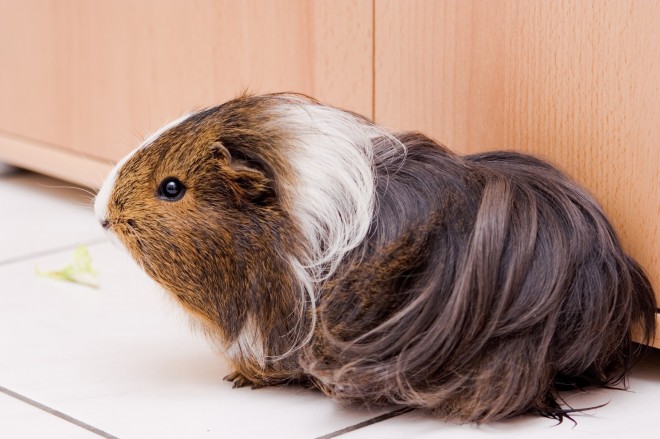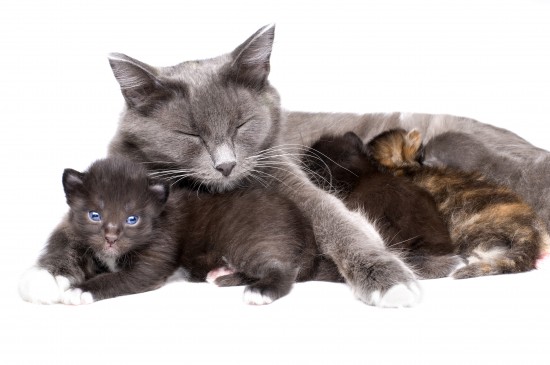

If a veterinary surgeon talks to you about cancer in your pet, it is probably one of the hardest discussions you may have with them, other than euthanasia. Cancer in cats and dogs is one of the most common causes of death reportedly second only to road accidents.
Cancer (or the medical name Neoplasia) is a disease caused by the dividing of body cells, which has become uncontrolled. These body cells are the building blocks of all living tissue. Cancer cells lose their normal function and can divide rapidly or slowly according to their location and type.
When the cells divide uncontrollably they can cause swelling to local areas, the swellings are classed as tumours. If the cancer cells are in the bloodstream, then the cancer itself can move around the body.
Of the two types of tumours, those that are benign are much easier to deal with. Benign tumours remain in one place and usually grow slowly. Because they are in one place they are sometimes easier to remove surgically, however they can cause problems by compressing on nearby organs and other vessels.
These tumours are much more aggressive and faster growing. They invade surrounding tissues and spread through the body rapidly via the circulatory system. Because of the very nature of malignant tumours, surgically they are very unlikely to be removed completely.
Dogs and cats, just as in humans, can have certain factors that influence the likelihood of developing cancer. These factors can include:
Cancer is so complex that it may carry many signs that are found in other diseases, both serious and non-serious. It is important to recognise the signs but remember that it does not automatically mean your pet has cancer. All the the signs listed below are worthy of a visit to a veterinary surgeon.
Because there are several types of cancer, just as in humans, the veterinary surgeon may perform several tests to reach diagnosis. There are five main procedures that can help in diagnosis:
Palpation
A full examination of the dog or cat feeling for lumps and bumps especially ones that are new. Many vets ask if the owner has felt any lumps on the animal during the health check for an annual booster.
Blood tests
These tests will look at the blood cells to determine for abnormalities. They can also indicate the level of substances that can result from tissue damage caused by cancer.
Biopsy
This is where a sample of the tissue from the tumour is taken. It is sometimes possible to take a biopsy with a very fine needle during consultation (known as a fine needle aspirate). If a biopsy needs to be taken by cutting a portion of the tumour, then this is done under anaesthetic. The specimens will be sent to a laboratory for microscopic examination and interpretation.
Diagnostic imaging
To check if tumours have spread internally the veterinary surgeon may want to x-ray the animal. It is also becoming common to use ultrasound to view tumours.
Endoscopic examination
By using a fibre optic tube with a camera, which is passed into the body, not only can the area and tumour be viewed at biopsies can also be taken using specialist equipment within the endoscope. This is common particularly in the digestive and urinary tracts.
If your cat or dog has been diagnosed with cancer there are treatments that available and some can lead to a positive outcome.
Surgery
If the tumour is localised (not spread to other areas of the body) then an operation to remove the tumour can lead to a complete recovery. If the cancer has spread to other areas and the primary source is known then this may be able to be removed and the following recommended to be carried out.
Chemotherapy
The use of special anti-cancer drugs, to destroy the cancerous cells in the body. The drugs are usually given by injection into a vein some however can be given as tablets.
Radiotherapy
This is using high-energy rays to destroy the cancer cells while doing as little as possible to normal cells. This is only performed in specialist veterinary centres.
Whereas several years ago the only option for animals with cancer was euthanasia, with today's modern advances in veterinary medicine there is a greater chance of survival for your pet.
 Rabbit Agility - Teaching Your Rabbit Tricks
Rabbit Agility -
Rabbit Agility - Teaching Your Rabbit Tricks
Rabbit Agility -
 Can Dogs Make Owners Feel Guilty?
Can Dogs Make Own
Can Dogs Make Owners Feel Guilty?
Can Dogs Make Own
 Floor Time For Your Guinea Pig
Floor Time For Yo
Floor Time For Your Guinea Pig
Floor Time For Yo
 Cat Breeding - The Arrival And Early Days Of Your Kittens
Cat Breeding - Th
Cat Breeding - The Arrival And Early Days Of Your Kittens
Cat Breeding - Th
 Making A Perfect Arrangement For Your Loved Ones
Making A Perfect Arrangement For Your Loved Ones
Making A Perfect Arrangement For Your Loved Ones
Making A Perfect Arrangement For Your Loved Ones
Copyright © 2005-2016 Pet Information All Rights Reserved
Contact us: www162date@outlook.com